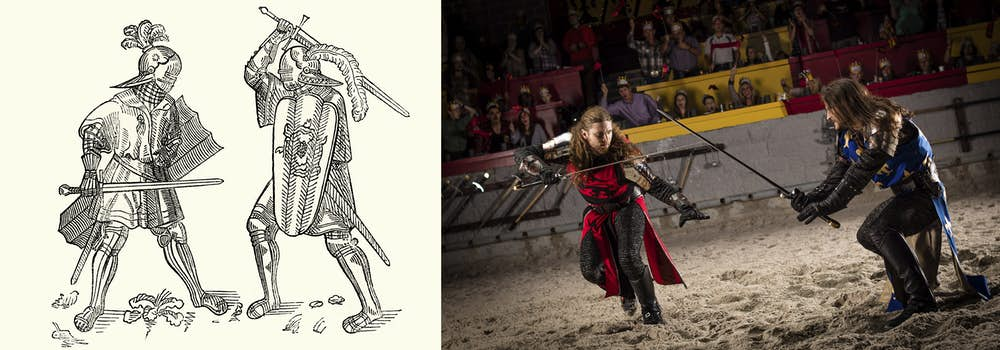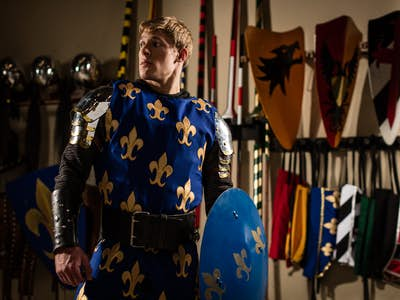Knights
Knights were medieval gentleman-soldiers, usually high-born, raised by a sovereign to privileged military status after training as a page and squire.
Originally knights were attendants or specialized foot-soldiers, but the status of knights was elevated around 800 A.D.

Kings or lords would raise a soldier to a knight by lightly striking (dubbing) the knight’s shoulder with the flat of his sword. The knight was given a sword, a pay raise and, frequently, a plot of land. Most knights were required to be at least 21 years old.
Knights were considered elite soldiers in battles, wars and crusades, but when not in such situations, they usually acted as law enforcement officers of the local lord’s court or that of the queen.

Knights began fighting while riding large and powerful horses called warhorses. This radically changed how conflicts were waged at that time. Since these horses were expensive, only wealthier men could afford to become knights.
Knights required attendants to handle the knight’s several horses, maintain and hand him his heavy weapons and shield, assist him in mounting and dismounting the horse and guard his prisoners. Squires assisted the knight in battle training and exercises, and often became knights themselves.
Knights typically wore better than average clothing, but wore chain mail, helmets and partial suits of armor only in battle. Swords, daggers and sometimes lances were the weapons of choice. Full suits of armor made of plate steel came into use around 1400.
Each knight had his own flag or banner that identified him on and off the battlefield, called a coat of arms. The pattern and colors on the flag were often repeated on his shield and on other items belonging to the knight.
The principles and customs of the medieval knight were categorized as chivalry. The word was taken from the French version of the Latin word for horse (cheval). (In France, knights are often called chevaliers.) Knights were known for their masterful skills with horses. A knight’s code of conduct included: mercy, humility, honor, sacrifice, faithfulness, courage, utmost graciousness and courtesy toward women.
Coat of Arms

During The Middle Ages, knights used a coat of arms to identify themselves, which was especially useful in battle. In a society where few people could read and write, pictures were very important.
Traditional Colors: Black, Royal Purple, Emerald Green, Royal Blue or Sky Blue, Bright Red
Metals: Gold (yellow) and Silver (white)
The basic rule is “metal on color or color on metal, but not metal on metal or color on color.” This means that the field (the background) on the shield can be either a metal or a color.
Animals were frequently used as a main charge. They were not drawn to look three dimensional, but were shown as if they were flat. The pictures were to represent the animal as a symbol: Lion, Bear, Boar, Eagle, Horse, Dragon, and Griffin.
Medieval Vocabulary
Page: A boy who acted as a knight’s attendant as the first stage of training for chivalric knighthood.
Squire: A young nobleman attendant upon a knight and ranked next below a knight in feudal hierarchy.
Page: A boy who acted as a knight’s attendant as the first stage of training for chivalric knighthood.
Squire: A young nobleman attendant upon a knight and ranked next below a knight in feudal hierarchy.
Chivalry: The medieval system, principles and customs of knighthood. The qualities idealized by knighthood, such as bravery, courtesy, honor and gallantry toward women.
Dame: A woman holding a nonhereditary title conferred by a sovereign in recognition of personal merit or service to the country. The wife or widow of a knight.